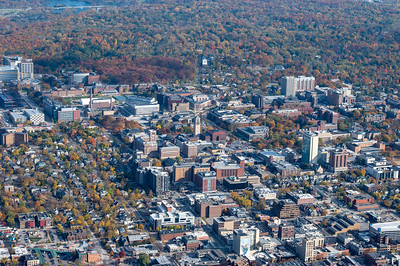Earlier this week I wrote about ALICE households, and how the profile of an ALICE household is changing. People have a lot of misconceptions about poverty and near-poverty. These misconceptions color their view of who lives in these households and how widespread the issue of income inequality is. The United Way of Michigan updated its data on households in near-poverty, and the results are eye-opening.
It might not surprise you to learn that two-thirds of households in the City of Ypsilanti fall below the United Way’s ALICE threshold. But it may surprise you to know that 48% of households in Ypsilanti Township also fall below the ALICE threshold. And so do 41% of households in the City of Ann Arbor and the City of Chelsea. 35% percent of households in Superior Township, 33% of households in Northfield Township, 31% of households in Pittsfield Township, and 30% of households in Saline and Saline Township also fall below the current ALICE threshold.
Living in near-poverty is a lot like living in poverty, except that these households don’t typically qualify for the same types of aid that households below the poverty line do. These households are hanging on, but not by much.
More than 40% of households in Michigan live paycheck-to-paycheck. They can’t tolerate even small variances in their household budgets or unplanned expenses. These households struggle to pay the rent, which is 10% higher in Washtenaw County than the national average. Many cannot qualify for a mortgage – and even if they could – they can’t afford most of the available housing stock.
When you look at poverty and near-poverty in Washtenaw County a little more closely, it’s a little surprising to hear a Washtenaw Community College Vice President publicly exclaim that “we’re in a rich community.”
Because some of us are not.
Our WCC tax dollars should help ALICE households here
The distribution of ALICE households around Washtenaw County provide ample reason for WCC to focus on delivering high-value programs to our young adult workers, households with children, senior households and even households headed by single males. These all have the highest potential to be ALICE households, and WCC should be targeting them with programs that can help them improve their economic outlooks.
If WCC tracked and responded to the cost of living in Washtenaw County by altering its programs to combat ALICE-ness, its classrooms would be full. It would also help if the WCC Administration re-examined its perception of the distribution of wealth in Washtenaw County, and recognized that not all individuals, households, and municipalities are rich. The taxes these households pay to support WCC come from the hard-won earnings of households living on the margins.
Instead of finding ways to use Washtenaw County’s tax dollars to subsidize the attendance costs of students who don’t live, work, or pay taxes here, wouldn’t it be better for WCC to use our tax dollars to find ways to lift Washtenaw County’s ALICE households out of poverty and near poverty?
That would make ours a truly rich community.
Photo Credit: Bill VanderMolen , via Flickr

















